The Latin phrase of the Roman poet Publius Ovidius Naso, better known as Ovid, describes in just three words the essence of the exhibition and what the artist transmits with his photographic research.
It is hard to believe it, but all the photographs that make up the exhibition were taken in the last 20 years in Tuscany, but a skilful play of perspectives, colors and lights make the shots seem set in the most exotic corners of the planet.
The long “Serpente Verde” and “L’antica Muraglia” are located just 5 km from the center of Lucca, “Atlantide” and the “Michelangelo’s Marble Quarries” a stone’s throw from Versilia and as many from Garfagnana while “La Maison de Fils “, incredibly, a few hundred meters from the city walls of Lucca.
In the second part of the exhibition, the places forgotten by God follow, despite the fact that most of them were destined for his worship, with frescoes, sculptures, altars devoured by time, with the complicity of Mother Nature, who has forcefully recovered her spaces.
With his shots, Dantès makes eternal what remains of those places full of history, tradition and culture, but above all he captures the artistic and poetic trait of the acceptance of transience and imperfection that still sees them full of meaning and majesty, but inexorably eroded by the passage of time.
Some photos taken from the photographic exhibition
The exhibition includes 56 Fine-Art prints in the 60×42 format
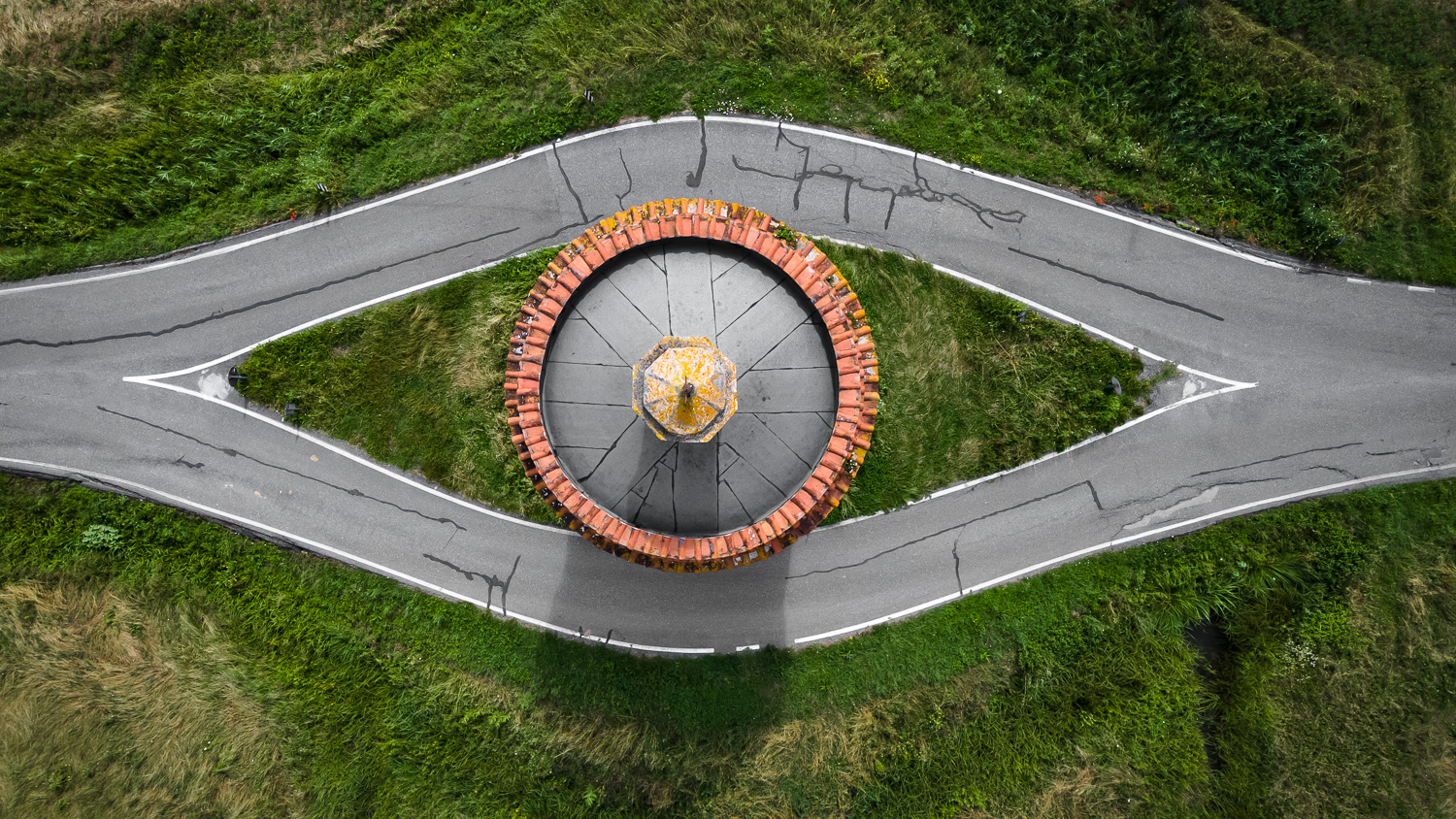
Known as “Torre dello Spada” in the municipality of Capannori, it is a sixteenth-century building that originally stood in the middle of a large swamp that reached the outskirts of Lucca and Capannori.
Most likely it was a real lighthouse placed to protect the numerous boatmen who sailed the surrounding marsh, in fact this locality is still called “il paduletto” today.
Peculiarity of the tower are the two “tongues” of asphalt that surround it.
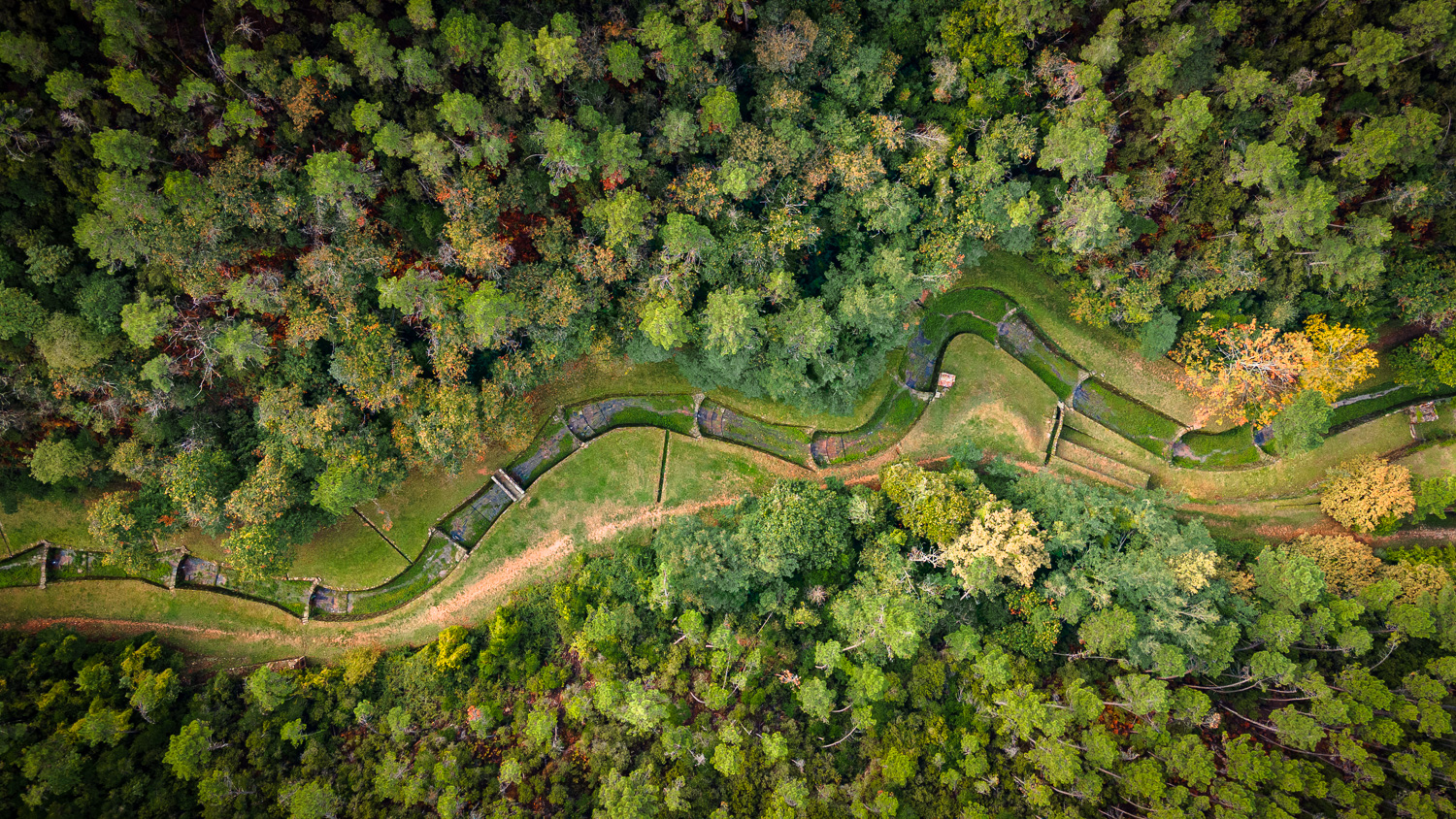
Some might think that this photo and that of the “temple of waters” were taken in some exotic overseas location.
In reality we are exactly 5 km from the city walls of Lucca.
It is the park of the so-called “Golden Words” where the story of the Nottolini aqueduct originates, whose construction began in 1823 and ended in 1833.
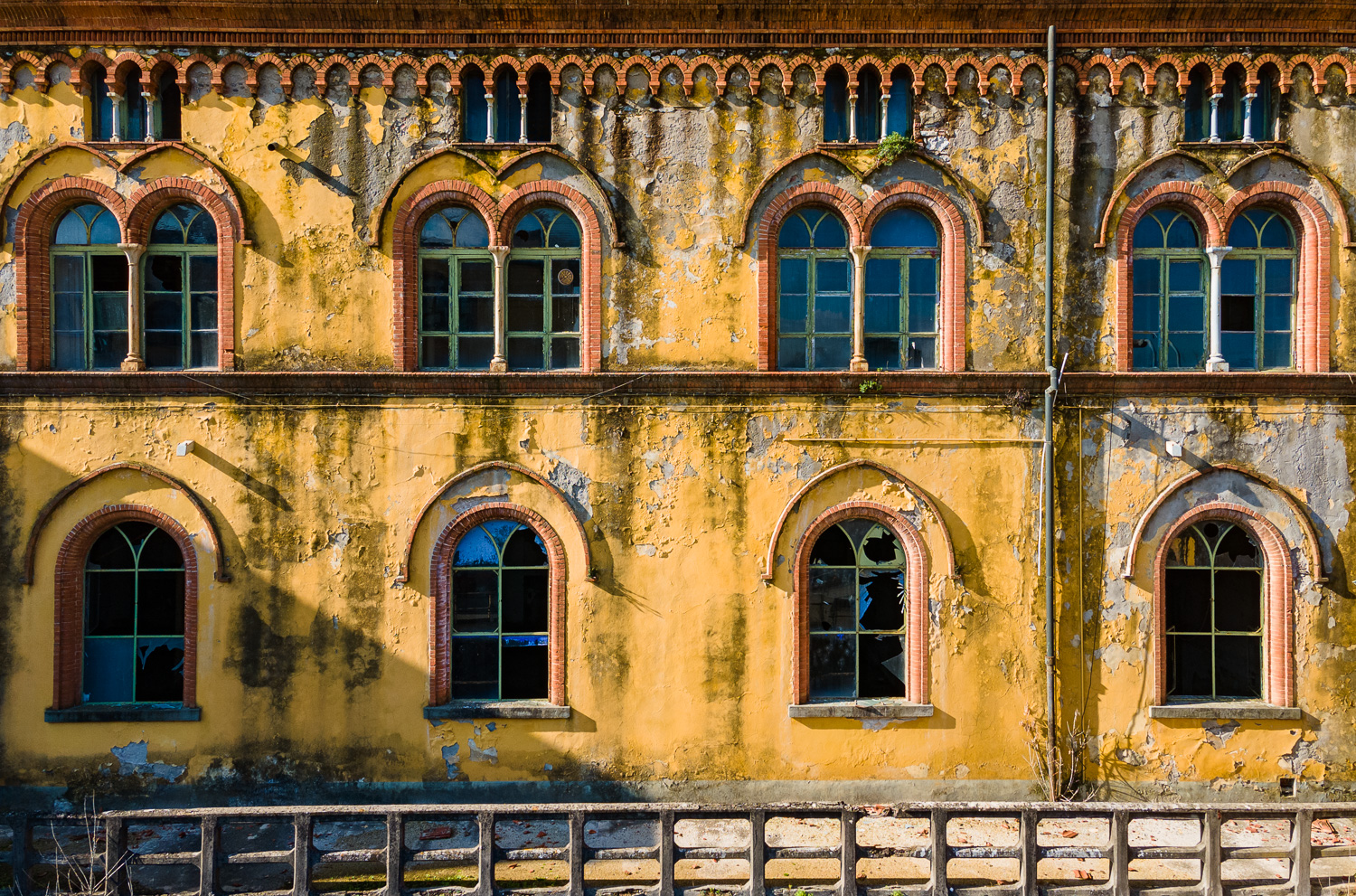
Like an elderly and elegant lady, Cantoni in Lucca and in the Lucca area she evokes stories, memories and many nostalgia.
In a photograph “the other side of the same coin”:
· A wonderful and elegant industrial architecture that brings back to the multicolored colors of the yarns that were produced inside;
· The decay that links the Cantoni to an “elegant” Industrial Archaeological site.
During the main productive period, the factory reached over 4,300 employees, and 70% were women.
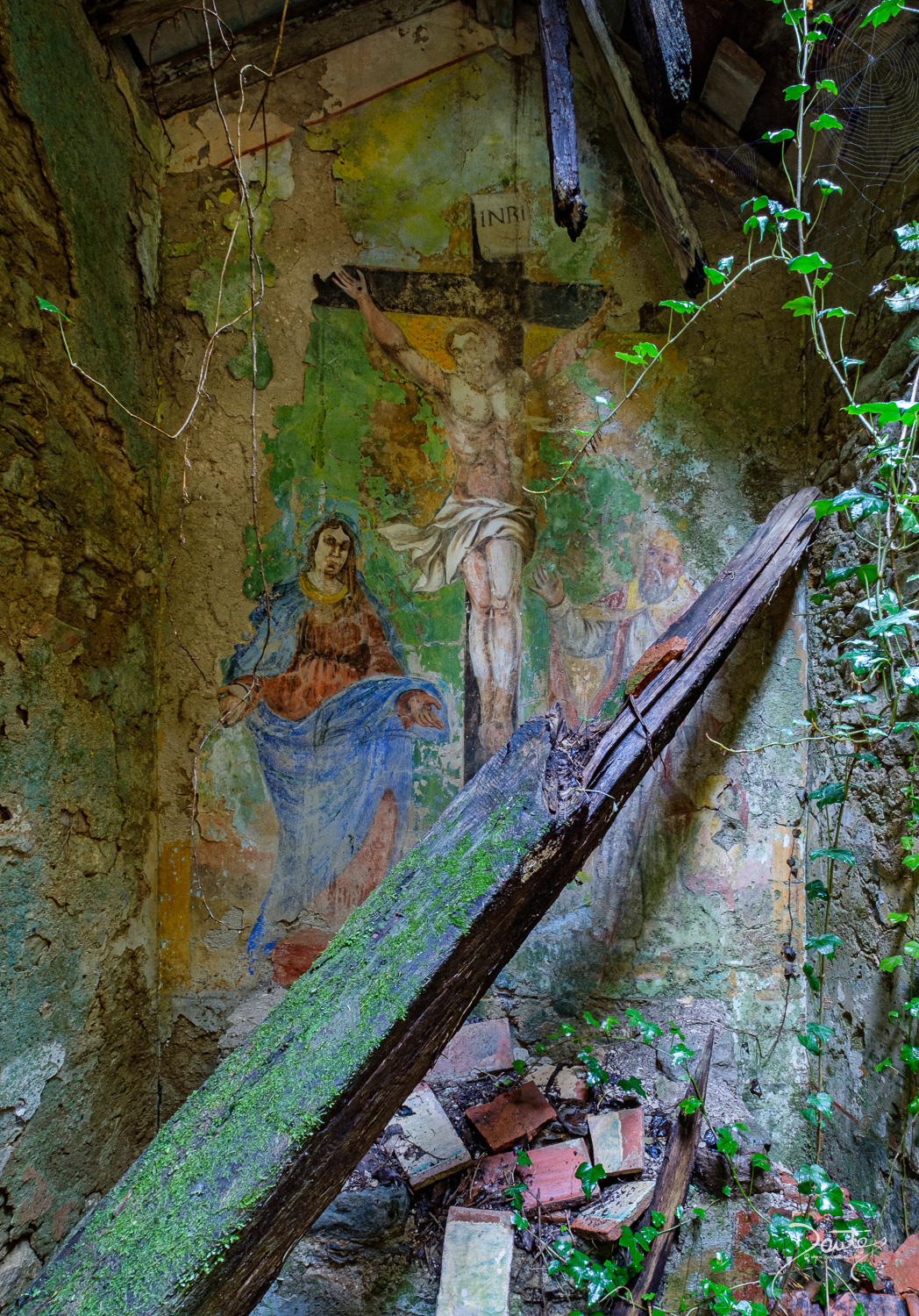
Some people have left a sign of their passage by scratching and smearing houses, frescoes, sacred places in one of the abandoned villages in the municipality of Bagni di Lucca (Lu). Even the grate that protects the small chapel of the crucifixion was not spared but by chance or “divine will”, it is not known, the roof, collapsing, blocked the grate itself with a long beam, preventing access
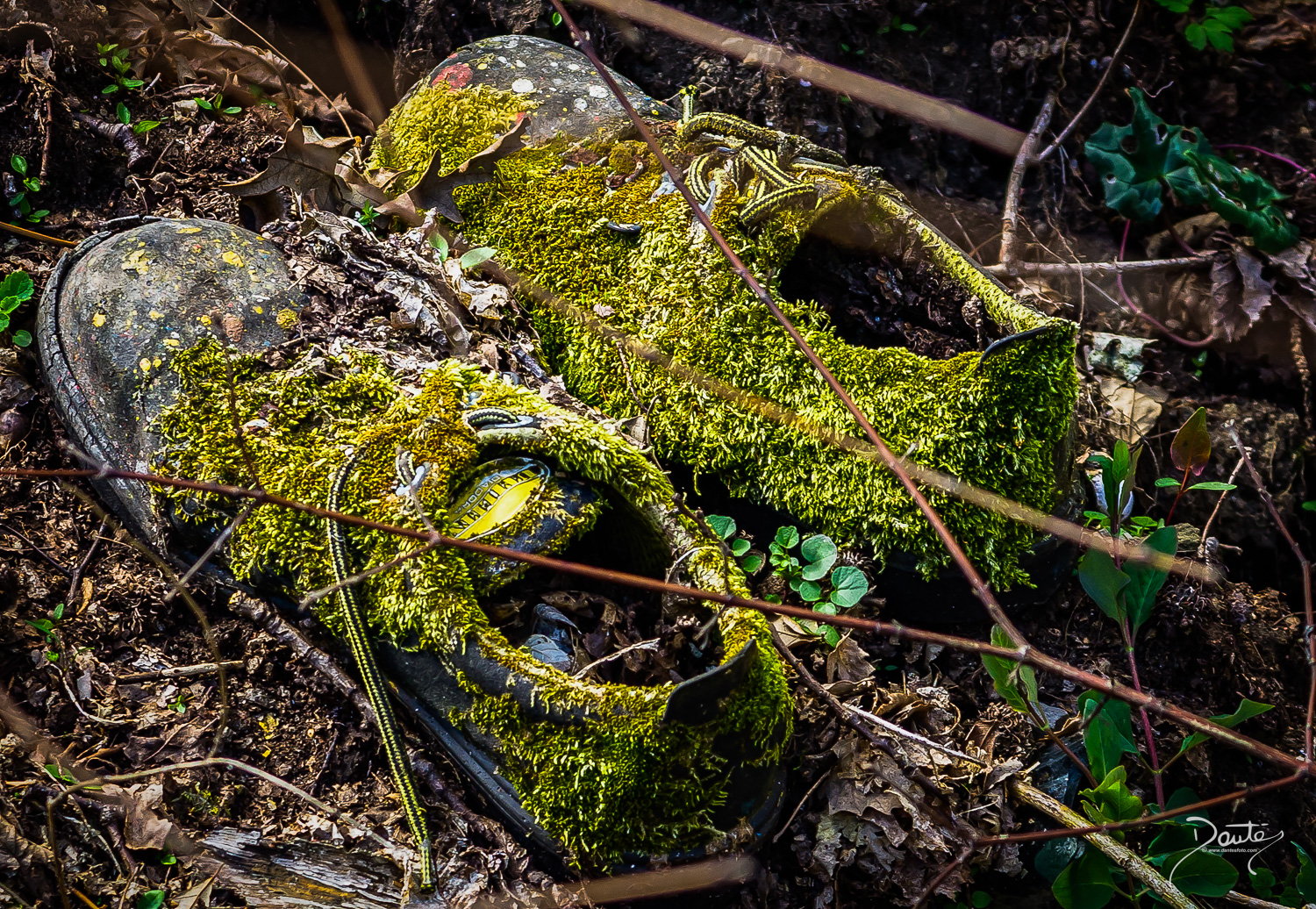
After passing the short and dark tunnel at the top of the village of Mulina in the municipality of Stazzema (Lu) and past the initial, almost blinding glow, what you find in front of you is something incredible.
The path that winds through the mines of Calcaferro is ready to give us a brief adventure in history, in what was, in the past, a center of vital importance for the manufacture of gunpowder and fuses for mining use.
… what remains of the tools scattered around and positioned inside the ancient workshops are now covered with leaves and moss.
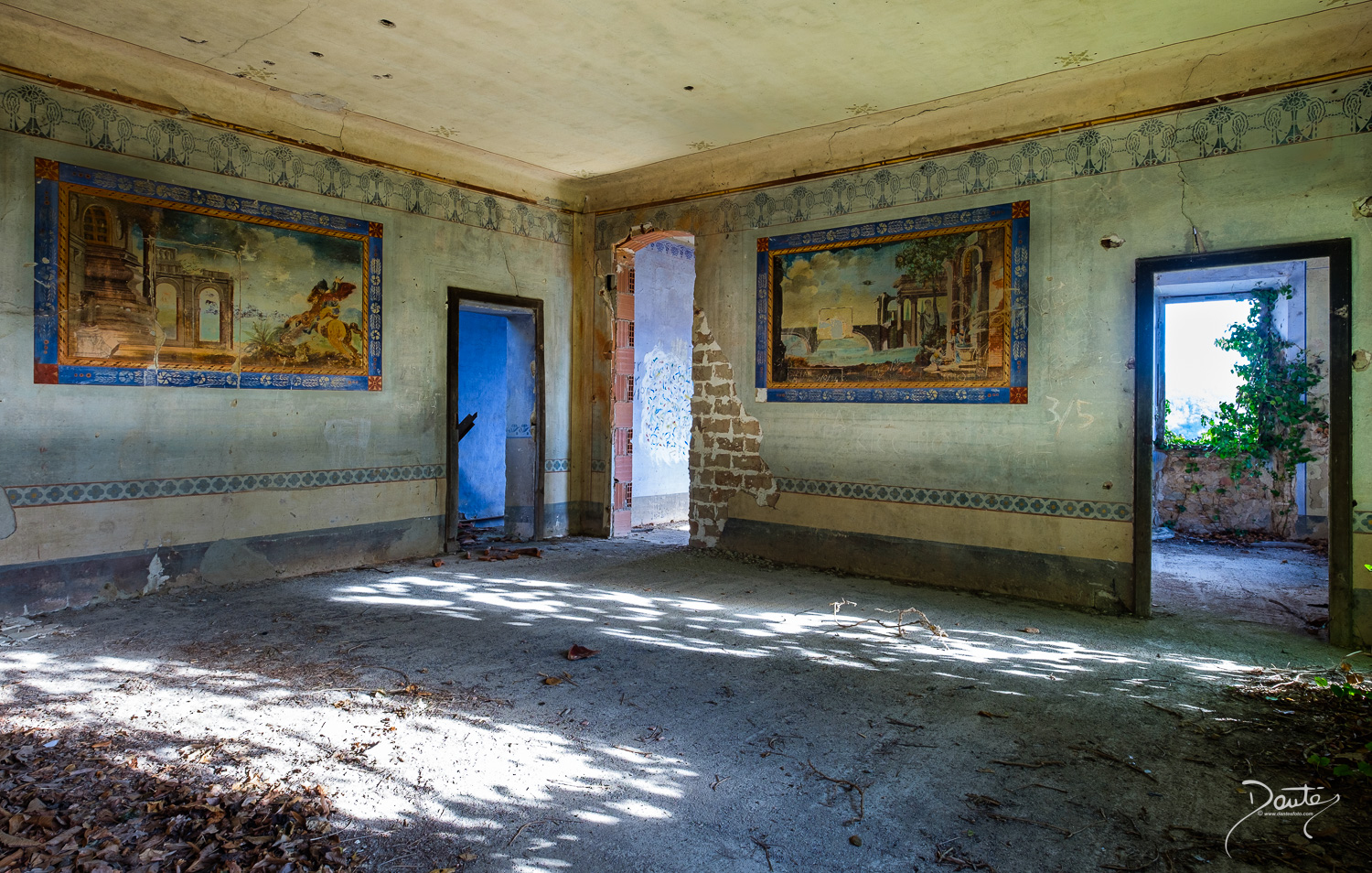
In an abandoned village in the municipality of Bagni di Lucca (Lu) everything is magical but what is most striking is the presence of an elegant villa with frescoes, right at the beginning of the town, also completely abandoned and in total decay.
Who knows how many dinners, meetings, loves and stories she will have witnessed.
Those who inhabited it certainly loved art, history and culture
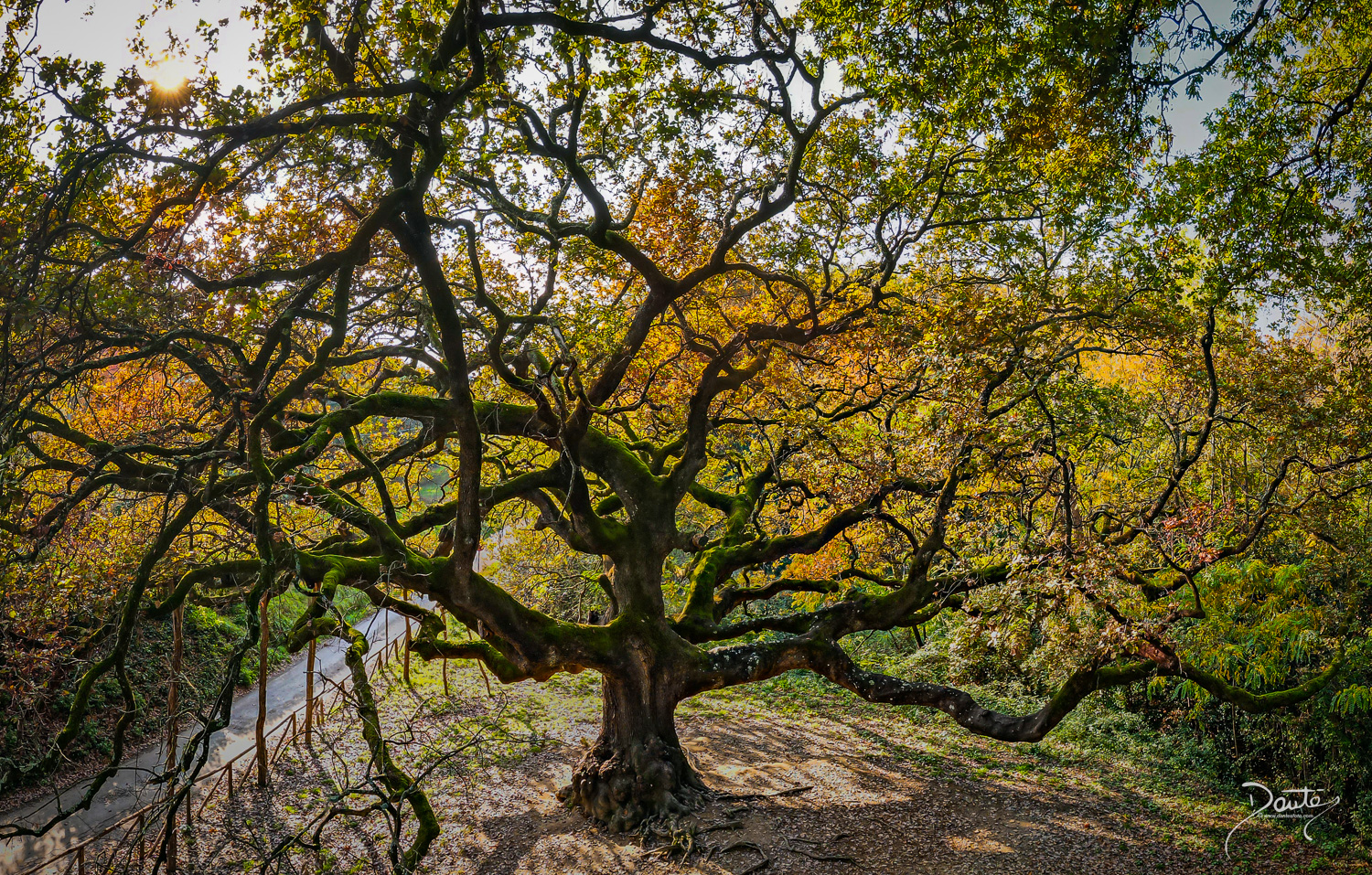
Known as “The oak of the witches” but above all as “Quercia di Pinocchio”, from which Carlo Collodi seems to have taken inspiration in writing the adventures of the famous puppet, it is located in the municipality of Capannori in Gragnano, on the border with the village of Collodi .
It has record numbers:
age about 600 years – trunk circumference 4.5 meters – height over 25 meters – diameter of the crown about 40 meters.
It is recognized as the “monumental tree of Italy”.
During the Second World War the Nazis wanted to tear it down to obtain timber, but fortunately the project vanished, thanks to a popular mobilization.
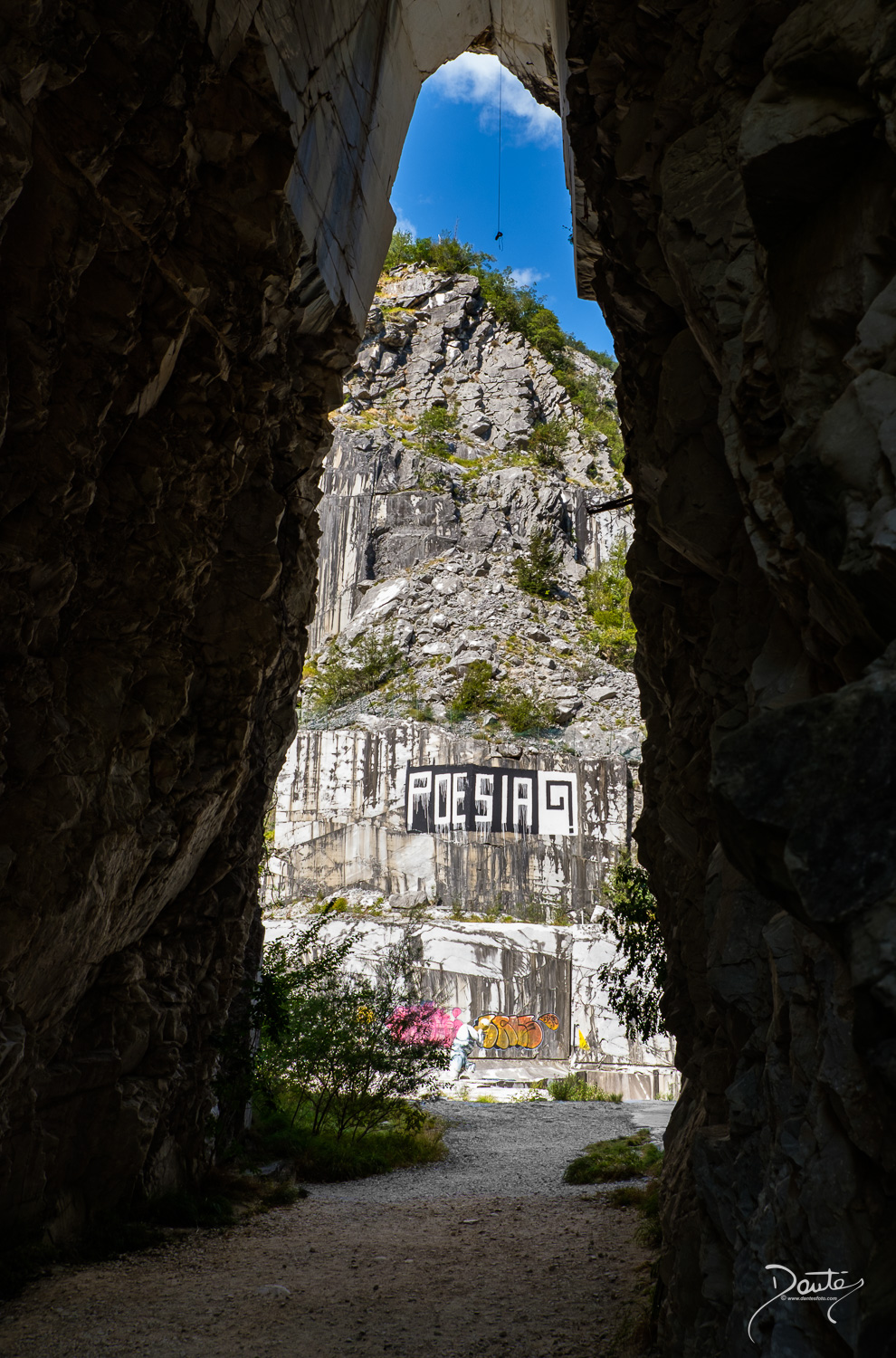
The entrance to this quarry was probably made by widening a natural crack in the rock.
The height is remarkable, impressive, crossing this tunnel you have the feeling of entering another world, that of giants.
To welcome us the “Poetry”
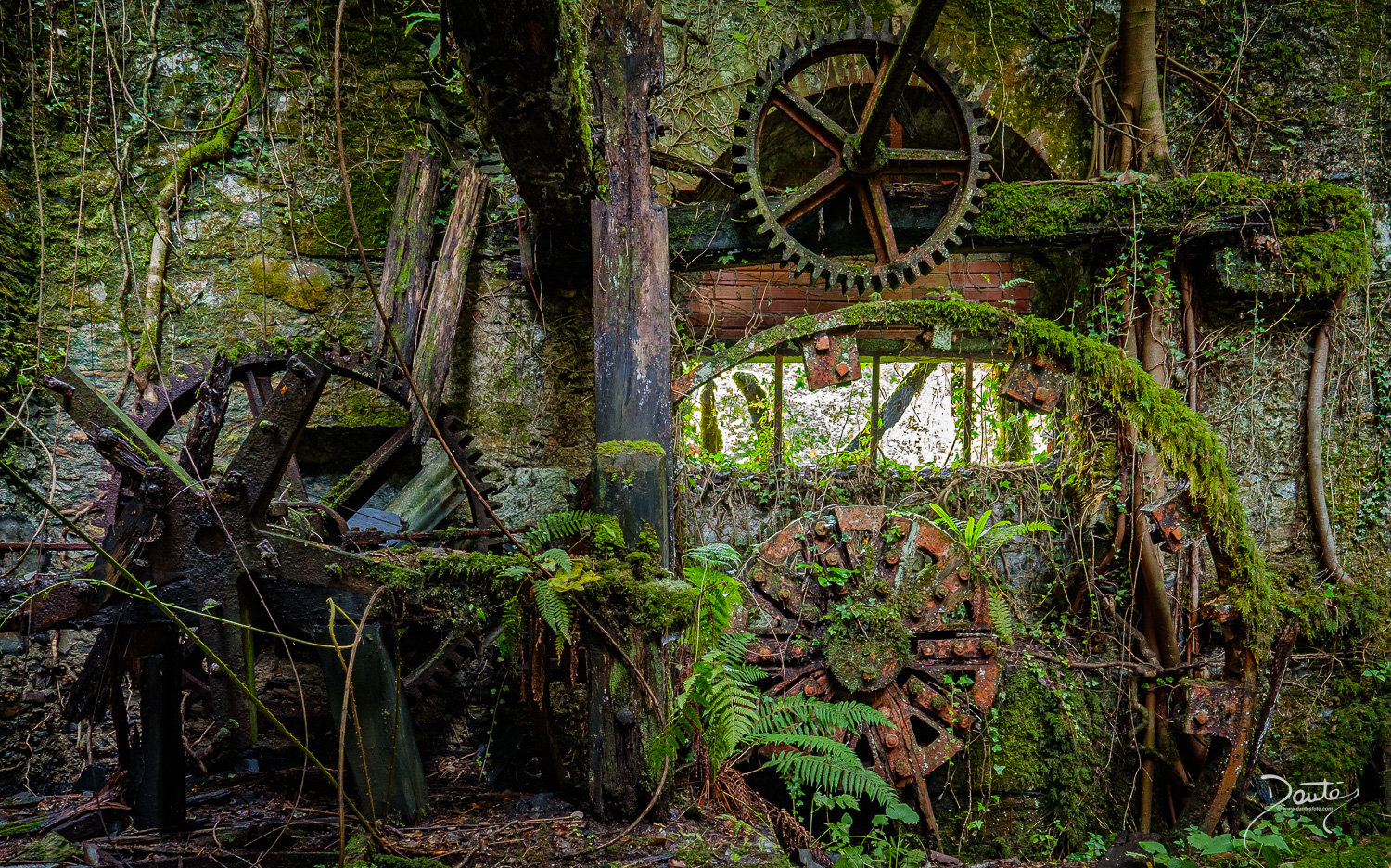
After passing the short and dark tunnel at the top of the village of Mulina in the municipality of Stazzema (Lu) and past the initial, almost blinding glow, what you find in front of you is something incredible.
The path that winds through the mines of Calcaferro is ready to give us a brief adventure in history, in what was, in the past, a center of vital importance for the manufacture of gunpowder and fuses for mining use.
… what remains of the tools scattered around and positioned inside the ancient workshops are now covered with leaves and moss.
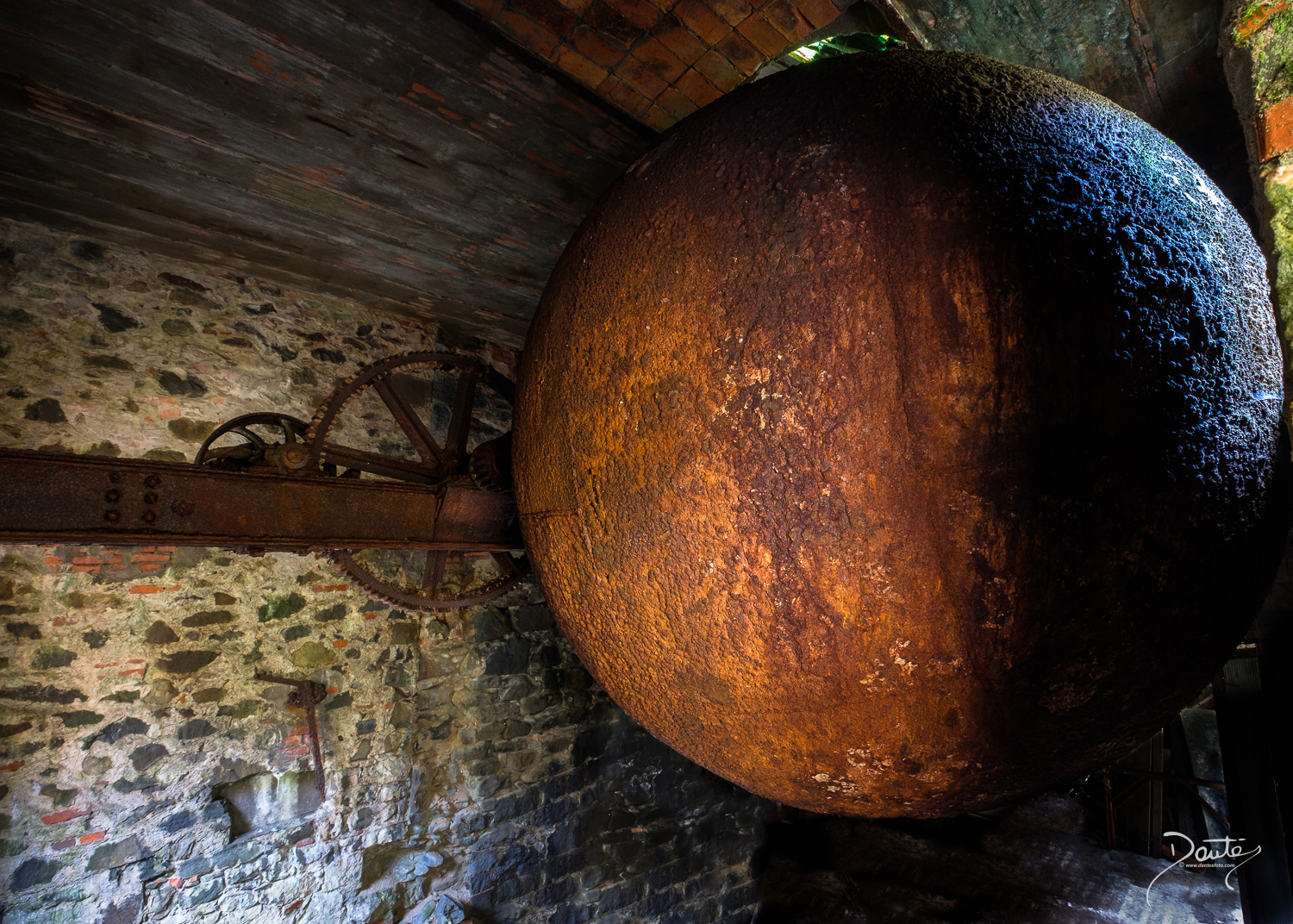
In 1834 a pharmacist from Villa Basilica, Stefano Franchi, invented the cartapaglia, (Yellow packing paper).
It was a production escalation so much so that in 1911 the province of Lucca boasted 106 paper mills with about 1,400 employees, especially women with 65,000 quintals of production per year.
The importance of paper straw is so great that the price of the raw material (straw) was established in the city of Lucca and the reference cost was defined for the whole of Europe.
After the war, the paper industry applied substantial changes to the processing system. The raw material that was increasingly used was “waste paper” and the drying took place at “hot”: With this system, the rooms used as “spanditoi” (like those in the photo) were made useless. of time have gone into total decay.
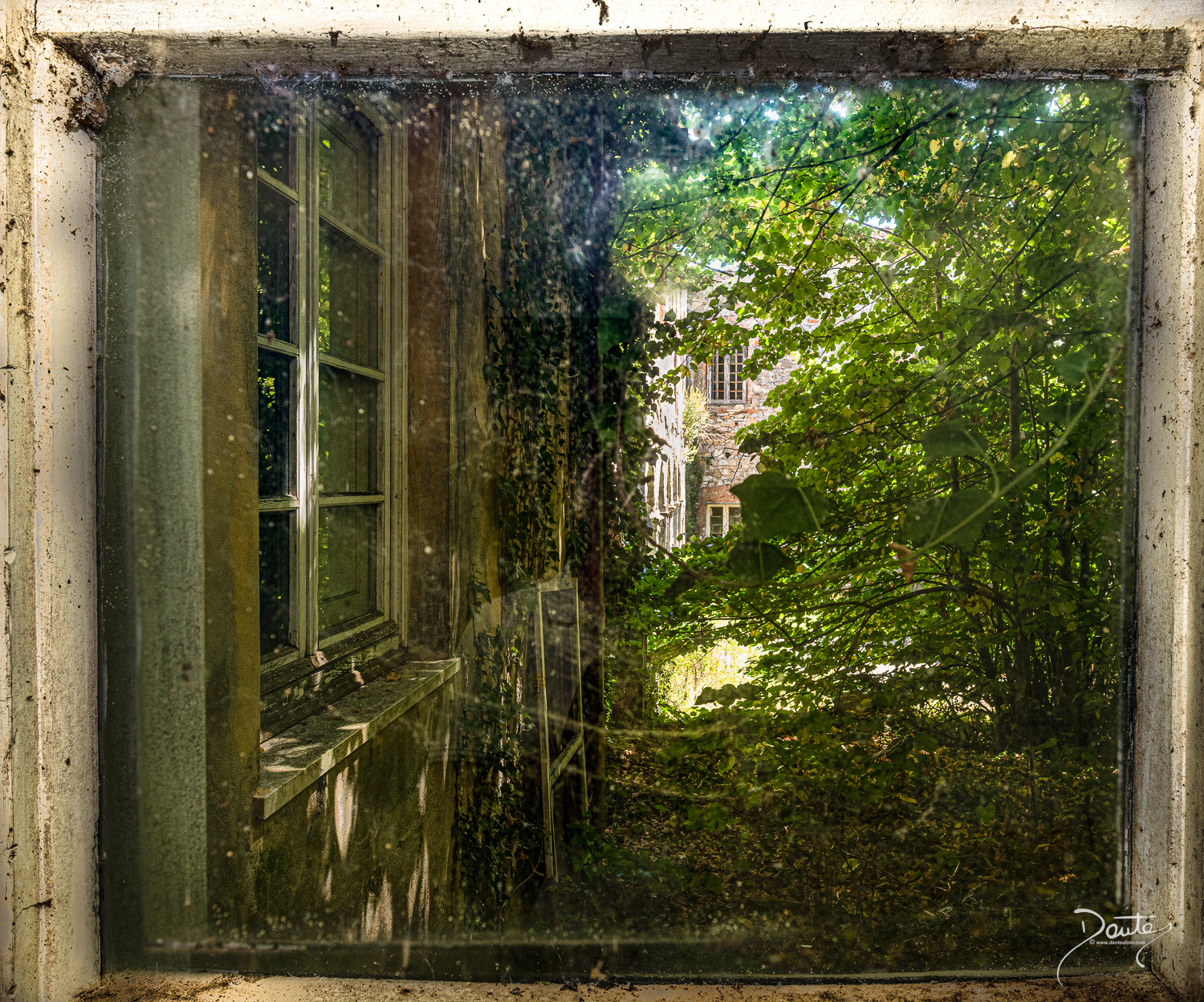
Nature takes back its spaces, here as elsewhere.
We are in Maggiano (Lu) at a place that all the people of Lucca know as “Lo Spedale de’ Pazzi di Fregionaja in Lucca “.
A window in the corridor of the cinema room overlooks a courtyard where the patients of the former psychiatric hospital entertained themselves before a film, a musical show or a play they interpreted themselves.
The significance of the exhibition
“Nature comes to the rescue of every abandonment and, where everything is lacking, it gives itself back whole, blossoms and green again on all the ruins: it has ivy for stones and love for men. Profound generosity of the shadow “.
This consideration of Victor Hugo in the novel The Man Who Laughs comes back to memory by observing the photographs that Dantès (Dante Luci) collected in the fascinating exhibition The Eye of Time.
In the context of the Sala dell’Affresco, recently adapted to its function as a place for the dissemination and enjoyment of art, the Cassa di Risparmio di Lucca Foundation has gladly exhibited these images of abandoned corners that are covered in greenery. Nature regaining possession of lost spaces: old houses, small churches, buildings once used for productive activities covered with plants, leaves, grass, moss. A sort of re-naturalization of otherwise precluded spaces. Places considered by man to be useless and fruitless are a heritage that nature is able to recycle, we could even say to regenerate: where man abandons, nature gives new life, even if at a superficial glance it may not appear so. The salvation of the world is in the wilderness, says the American philosopher Henry David Thoreau, who teaches us to live in places and not just to occupy them.
As nature covers stones with ivy for Hugo, it pours out love for men, it is their source of life. Reason to protect it more and more, instead of defacing and scarring it.
The photographs of Dantès, taken in various places in the Province of Lucca, particular, original, suggestive, the result of a long and passionate research work, in addition to being appreciated for the artistic aspect, also represent a message of hope for the future with their invitation to observe the environment, love it and take care of it.
Raffaele Domenici
